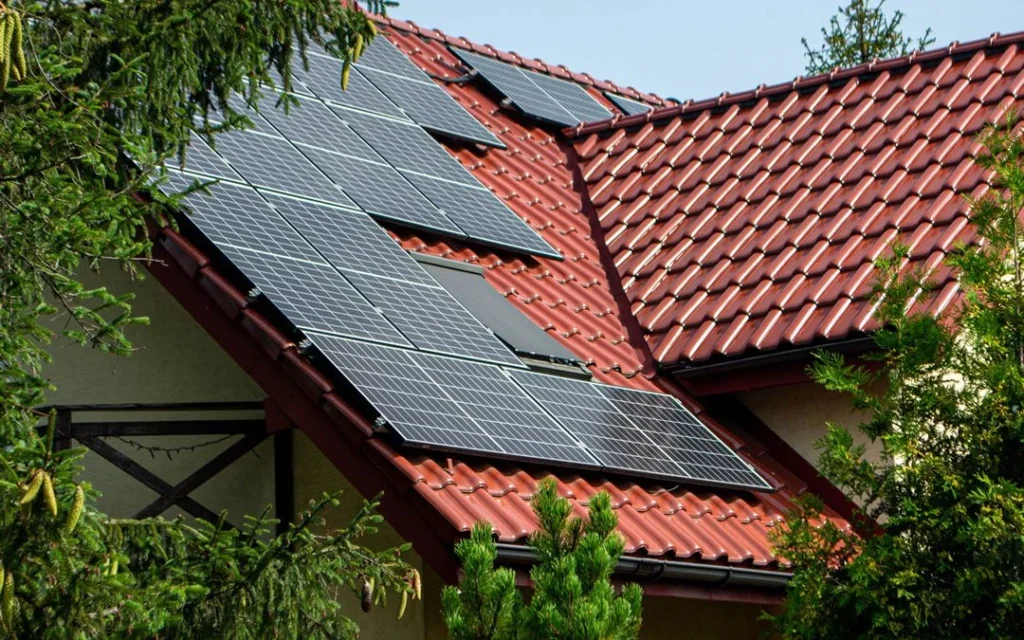In recent years, the shift towards sustainable living has reached new heights, with homeowners exploring eco-friendly options in various aspects of their lives. One such area seeing significant innovation is roofing. Traditional roofing materials, while functional, often have a substantial environmental impact.
However, the emergence of eco-friendly roofing solutions has brought a wave of change, offering environmentally conscious alternatives. For those considering a roof upgrade or repair, exploring eco-friendly options with professionals like Berlin Roofing Services can make a significant difference.
The Importance of Eco-Friendly Roofing
Eco-friendly roofing isn’t just a trend; it’s a necessity for our planet’s health. Sustainable roofing materials reduce the ecological footprint of homes by minimizing waste and improving energy efficiency. This shift is not only beneficial for the environment but also for homeowners, as these materials can be cost-effective in the long run due to their durability and energy-saving properties.

Types of Eco-Friendly Roofing Materials
When selecting eco-friendly roofing materials, homeowners have a range of innovative and sustainable options to consider:
- Solar Tiles: These innovative tiles blend the functionality of traditional shingles with the benefits of solar technology. They capture solar energy to generate electricity, which can significantly reduce utility bills. Unlike bulky solar panels, solar tiles integrate seamlessly with your roof, maintaining aesthetic appeal while being environmentally responsible.
- Metal Roofing: Ideal for those seeking durability and sustainability, metal roofing is a standout choice. Its reflective surface can help lower cooling costs by deflecting sunlight. Additionally, metal roofs are often made from recycled materials and are fully recyclable at the end of their life, making them a circular economy-friendly option.
- Green Roofs: Transforming roofs into living ecosystems, green roofs are particularly beneficial in urban settings. They’re covered with plants that help absorb rainwater, reduce heat absorption (thereby lowering urban heat islands), and improve air quality. Green roofs also offer additional insulation, leading to energy savings. They create habitats for urban wildlife and offer a unique aesthetic appeal, turning unused roof space into a green oasis.
- Recycled Shingles: These shingles are made from various recycled materials like rubber, plastic, or wood fiber. They offer a practical alternative to traditional roofing materials by repurposing waste into useful products. Recycled shingles are often indistinguishable from traditional materials in terms of appearance and functionality, yet they significantly reduce the environmental impact of roofing.
- Slate and Clay Tiles: Natural slate and clay tiles are not only aesthetically pleasing but also extremely durable, with a life expectancy that often surpasses that of the buildings they cover. Their natural composition means they don’t release harmful toxins and can be recycled. Though heavier and more expensive, their longevity and minimal environmental impact make them an eco-friendly choice for those who prefer a traditional look.
Evaluating the Eco-Friendly Impact
The eco-friendliness of roofing materials is primarily assessed through three factors: their carbon footprint, lifespan, and recyclability. Eco-friendly options tend to have a lower carbon footprint during their production process, meaning they contribute less to greenhouse gas emissions compared to traditional materials.
Their enhanced durability is a significant advantage, as it reduces the frequency of replacements, thereby lessening the continual demand for new materials and the environmental toll associated with manufacturing and disposal. Moreover, the recyclability of these materials at the end of their life cycle further diminishes their environmental impact. By opting for materials that are designed to last longer and can be recycled, homeowners make a conscious choice that benefits the planet.

Installation and Maintenance
The installation of eco-friendly roofing is a task that requires specialized knowledge and skills to ensure optimal performance and longevity. Professionals experienced in these specific materials can guarantee that the roof is installed correctly, maximizing its environmental benefits and efficiency. Once installed, eco-friendly roofs often require less maintenance than traditional roofs, but regular check-ups are essential.
Proper maintenance helps in preserving their condition and functionality, extending their life span significantly. Simple actions like cleaning gutters, inspecting for damages, and ensuring proper insulation can keep these roofs in top condition for years.
Cost Analysis and Incentives
Investing in eco-friendly roofing can initially appear more costly than conventional roofing. However, the long-term financial benefits are substantial. These roofs often lead to significant savings on energy bills due to their superior insulation and energy-efficient properties. For instance, solar tiles can generate electricity, potentially reducing energy costs dramatically. Furthermore, the durability of these materials means less frequent replacements and repairs, saving money over time. To encourage the adoption of sustainable practices, many local and national governments offer financial incentives, such as tax credits, rebates, or grants for homeowners who choose eco-friendly roofing. These incentives not only help offset the initial costs but also promote a broader shift towards sustainable living.
Challenges and Future Outlook
Despite the clear benefits, misconceptions and challenges remain. The upfront cost and lack of awareness are significant barriers. However, as technology advances and awareness grows, eco-friendly roofing is set to become more prevalent.
Conclusion
Eco-friendly roofing is more than just a roofing choice; it’s a commitment to a sustainable future. By choosing these materials, homeowners can reduce their environmental impact, save on energy costs, and contribute to a healthier planet. As the world moves towards more sustainable living practices, eco-friendly roofing stands out as a practical and impactful choice.






